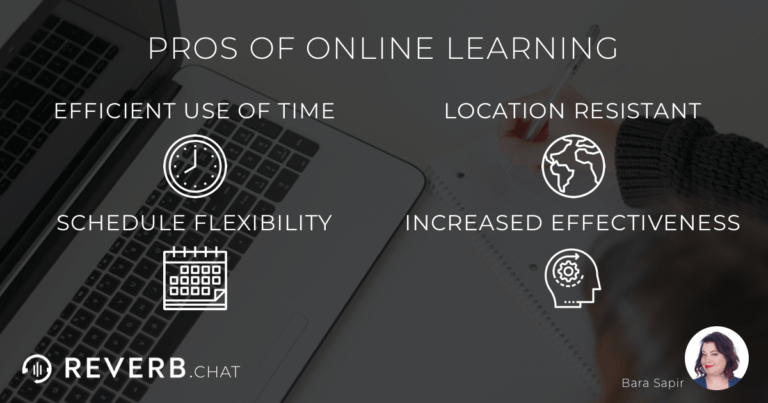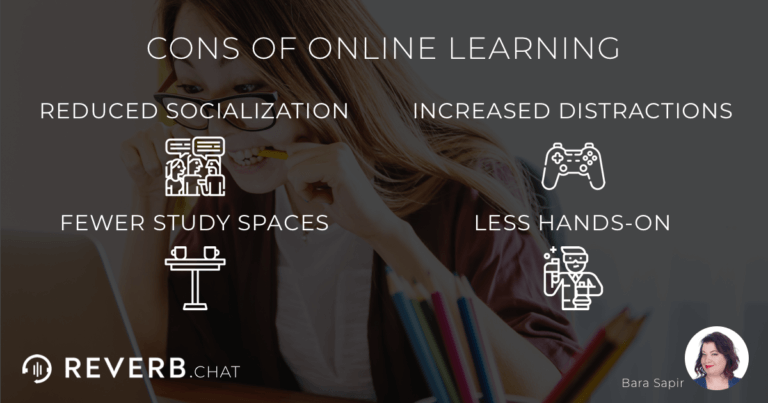The author’s views are entirely his or her own and may not always reflect the views of Reverb.
After a Spring term when all parents, teachers, students – and those at educational institutions – had to navigate online learning for the first time, many are thinking deeply about the pros and cons of this now dominant pedagogy.
Online learning is just like any other “technological’ innovation – no one turned back after the telephone, television, automobile, or internet entered the marketplace. The same is likely going to be true for online distance learning.
Yes, there are drawbacks, and there has been a steep learning curve. However, educators are mostly over the hump. Vast areas of society, education included, are now dominated by the reality that much can get accomplished anywhere and need not be relegated to location.
Yet, being a ‘digital nomad’ in COVID-19 isolation is, ironically, a ‘thing.’ This is why the jury is still out on online learning and why many continue to ponder the advantages and disadvantages. Here are the dominant ones.
Jump ahead:
Pros and advantages of online learning
There are many positive aspects of learning away from ‘brick and mortar,’ especially as educators and technologists continue to innovate. Every day new and effective ways of teaching, learning, and engaging with each other and with material are conceived.
Here are the advantages of online learning in 2020 and beyond:
Efficient use of time
If you’re a parent, it’s easy to rejoice at the thought of no more hurried mornings trying to get your child to school on time or slogging through rush hour traffic.
Learning remotely saves time! In fact, some surveys show that college students who take online classes graduate earlier than their peers.
Location no longer a barrier
The best part of distance learning is the world of opportunity that it creates.
Students can learn from experts no matter where they are located. The internet allows students to communicate with educators all over the world.
Work with students’ preferred schedules
Students of any age – but especially teenagers – have long struggled to balance school with a healthy sleep schedule. A 2006 poll showed that an astounding 87% of high school students don’t sleep the recommended 8-10 hours per night.
Online learning allows students to have more flexibility to learn at times that are suitable for their life and sleep schedule.
Increased effectiveness
Some studies show that with proper technology, online learning is actually more effective than in-person.
Education technology is a billion-dollar industry that is continually introducing innovations that improve learning retention, so now is the perfect time for students, parents, and educators to leverage these tools.
Cons and disadvantages of online learning
Just like any form of learning, online presents its own challenges and difficulties. Here are a few:
Less in-person modeling and socialization
There is plenty of evidence that social isolation has adverse impacts on both mental and physical well-being. Socialization in school provides an environment that fosters personal development, self-awareness, and interpersonal skills.
If students no longer have opportunities to connect with classmates in or outside the classroom, their growth may become stunted. Students may begin to feel lonely, isolated, or less connected with their social group and may even lose interest in learning.
There are so many life lessons to learn from ‘how’ to be with and play ‘nice’ with others.
Increased distractions
Having constant access to technology in a learning environment can create tempting distractions for students.
With teachers no longer physically present, it’s easier for students to appear to listen to lectures while checking social media or texting friends. For teachers, it’s harder to oversee this behavior outside the classroom.
Lack of conducive study space
Environment has a profound impact on our mental health and can literally create or reduce stress.
Students who don’t have a quiet space to study may struggle with feeling stressed, distracted, and less able to absorb information.
In the formative years of school, students typically learn and establish good study habits. Not having oversight, support at home, or a designated space to learn may negatively affect student output.
Lack of kinesthetic learning experiences
Learning at home means less hands-on and group-experiential activities. This can be detrimental for those who learn best through ‘doing.’
Even students who don’t consider kinesthetic learning as their dominant learning style may miss learning activities such as creating physical projects or participating in science labs.
What’s going to stay the same
There are many ways education won’t change, despite moving online. Here are a few predictable aspects of education that will dependably remain:
Reading microexpressions
Our rich channels of virtual communication allow for socialization that is nearly on-par with traditional in-person dialogue.
Microexpressions – nuanced facial expressions – are still ‘readable’ via video chat. Having fluency in reading other people’s emotions more fully leads to deeper, more meaningful conversations and learning opportunities.
Gone are the days of blurry and laggy conference calls. Various video chat tools allow for high-definition and high-quality communication that comprehensively meets students’ needs.
Building rapport
Thanks to video calls, teachers can still build rapport with their students and leverage valuable connections. Making eye contact, asking questions, and chatting with ‘classmates’ remain critical aspects of the classroom environment, and all of these can be maintained.
Group work
Group projects remain a valuable way for students to work together.
Online, group work functions to connect students who are geographically distant. Studies indicate that group learning improves students’ communication skills and learning retention.
With structure, planning, and appropriate use of technology, students can still work with their peers.
Conclusion
As technology improves, it’s likely the pros of online learning will outweigh the still rather serious cons.
It’s definitely a balancing act, but as the world goes remote and technologists and educators put their focus on innovation, conditions will improve for all those involved in learning.
The future is bright, and the advantages are only going to increase!








